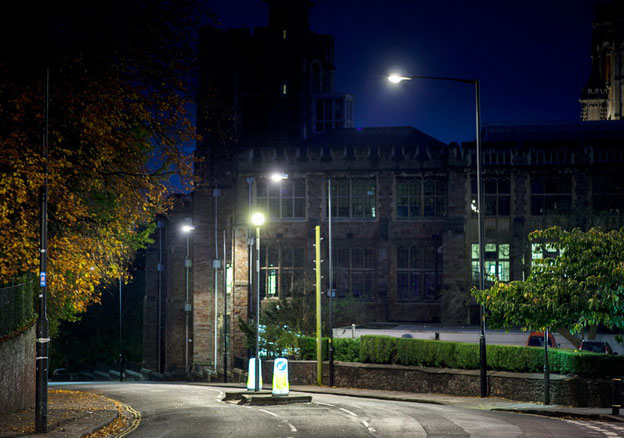Armin Mayer, Marketing Manager at GE Lighting explores in this article whether UK cities decision to turn off streetlights due to limited budgets is wise.
The ‘great switch-off' is an unfortunate sign that many local authorities are still not aware of the ways they can access modern, efficient lighting infrastructure that essentially pays for itself and saves money, energy and carbon both immediately and across its long lifetime.
By switching off streetlights to save on scarce budget resources, local authorities in the UK are sending a very clear signal: we can no longer afford to light public spaces at night.
 |
|
Upgrading of 8,000 HID lamps to dimmable CMH alternatives will save Bristol 4.2M KWH and £500,000 per year on energy bills as well as reduce CO2 emissions. Most significantly, the city will now be lit by white light; much closer to daylight, it offers further advantages in the fact that pedestrians feel more secure in their environment and car driver reaction time (mescopic vision) is at least six times higher. (LEDinside/GE Lighting) |
Some in the UK's lighting industry, including established players, have taken the switch off as an indication that local authorities are irresponsible. I do not share this view. I cannot imagine that local authorities are simply irresponsible, and that they are in any way interested in putting citizens at risk. This is simply a story about being forced by budget cuts to make spending decisions and trade-offs that are sometimes terribly difficult.
Also one can only assume that the UK's local authorities are aware that switching off streetlights is risky. While there is some debate on the topic and research is underway to measure the extent to which shutting off streetlights increases the risk of crime and accidents, one thing is certain: the switch off is a step backwards, and there is no immediate guarantee that turning once lit areas dark will not eventually put citizens at risk.
I see the ‘great switch-off' as an unfortunate sign that many local authorities are still not aware of the ways they can access modern, efficient lighting infrastructure that essentially pays for itself and saves money, energy and carbon both immediately and across its long lifetime.
Luckily, not all UK local authorities are in this trap, and many are not turning off their lights. On the contrary, some have realized fantastic new lighting projects that make them fit for a bright and sustainable future. Bristol is only one among a long list, which includes Birmingham and a number of others. These cities are installing LED and other kinds of efficient lighting technologies to realize savings and ensure streets remain not only lit, but properly illuminated and offering benefits like increased visibility and safety through better color rendering.
Upgrading of 8,000 HID lamps to dimmable CMH alternatives will save Bristol 4.2M KWH and £500,000 per year on energy bills as well as reduce CO2 emissions. Most significantly, the city will now be lit by white light; much closer to daylight, it offers further advantages in the fact that pedestrians feel more secure in their environment and car driver reaction time (mescopic vision) is at least six times higher. And if we extend our gaze beyond the UK and look towards Turkey, we see that the approach to outdoor lighting can be anything but short-termist. The Turkish government has embarked on a pioneering program to change all of its 6.5 million outdoor luminaires to LED. With 2% of the country's energy currently consumed by outdoor lighting the Turkish Government has recognized the long term gain of a US$ 1billion investment over 5-10 years. With the scheme projected to achieve a 40 percent saving on the current 4bn KW energy use per year the payback is considerable. More significantly, although the program will be privately financed at first, the savings will enable to project to be self-funding in around three years – an exemplar of long term thinking.
Ultimately, lighting is a strategic public asset that costs money and uses energy. Fortunately, there are a number of ways public authorities in the UK and beyond can obtain and maintain that strategic asset in a clever and cost effective way that ensures effective and reliable lighting when and where it is needed. - See more at: http://www.gelighting.com/LightingWeb/emea/news-and-media/illuminated-minds/the-end-of-streetlighting.jsp#sthash.X6yFQVBW.dpuf












